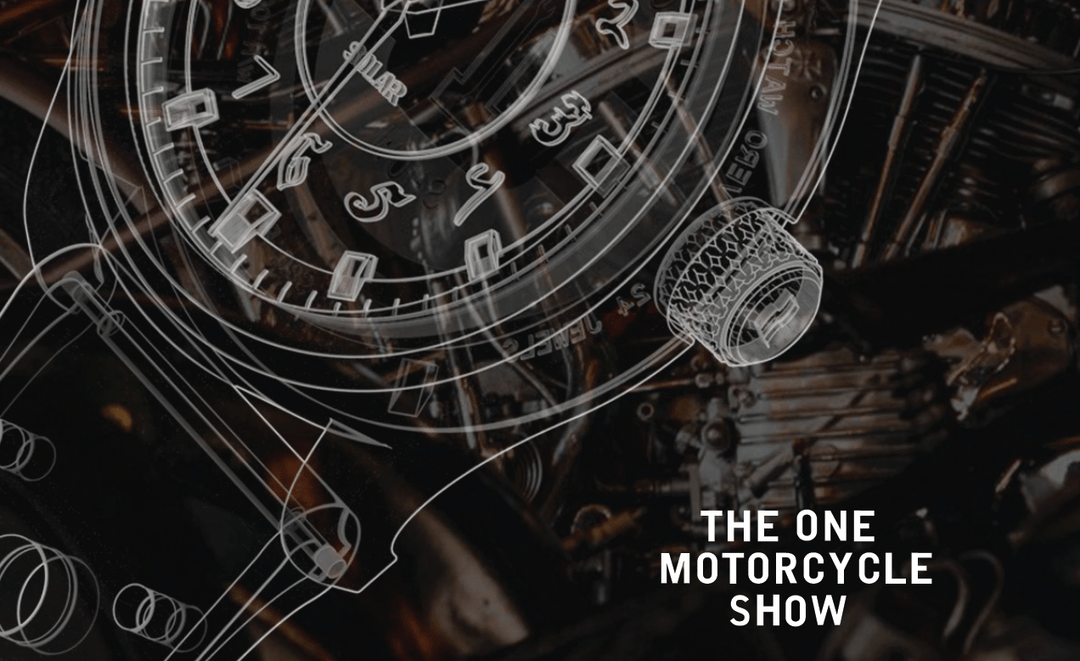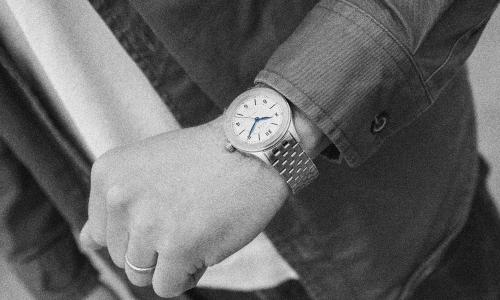Mastering the Mechanics: How a Mechanical Watch Works
We wanted to share some of our favorite features of the Meridian Manual Winds, and the tiny details that make mechanical movements so cool. Be sure to watch the video at the end of this article of our watchmaker, Kaine, assembling the Meridian Manual Wind Series here in our office in Portland, Oregon.

History of Mechanical Watches
The first mechanical watches date back to the 14th century and were created as a way to tell time without relying on the sun's position. Today, mechanical watches have become a symbol of luxury, style, and craftsmanship. They're highly regarded by collectors and watch enthusiasts alike. A well-made mechanical watch is truly a work of art, with each component playing a role in keeping accurate time. It even shows off a little.

Anatomy of a Mechanical Movement
At their core, all mechanical watches have a few key movement components in common. The first being the mainspring. This stores and releases energy to power the watch. The second are the balance wheel and escapement, which work together to regulate the timing accuracy of the movement.
Let's break each of these down a bit further.
First up is the mainspring. This is essentially a coiled-up spring that's wound tight when you manually wind your watch. As the spring slowly unwinds, it releases energy that powers the gears, and turns the hands.

Next, we have the balance wheel and escapement. These are perhaps the most important components in a mechanical watch, as they work together in tandem to control the release of energy and regulate the steady movement of the watch components. The balance wheel is a small, weighted wheel that oscillates back and forth at a specific rate. While the escapement is a mechanism that controls the release of energy to the balance wheel in small, regular intervals. The pink tab ends of the escapement are jewels, or synthetic rubies rather. Rubies are known to be tough and hold their smooth polished surface well- in fact, they're a 9 on the Moh's Hardness scale.
Mechanical VS Automatic Watch
Manual movements are the oldest and simplest type of watch movement. Today, they go by many names: “Mechanical”, “Hand-Wound”, and “Manual Wind”. They're all powered by hand-winding the mainspring by rotating the crown, and typically have a power reserve of around 36-48 hours.
Automatic movements, on the other hand, use the natural movement of the wearer's wrist to wind the mainspring. The motion of the wearer’s wrist turns a rotor that winds the mainspring, storing the power that drives the hands. Automatic movements typically have a power reserve of around 38-72 hours.
Watch Complications
Last but not least, let's talk about watch complications, AKA "dial features". Examples of complications include:
- Chronographs, which have a stopwatch function and typically have separate button functions and sub dials added to the style of the watch ,
- A Tourbillon helps improve watch accuracy as it keeps the watch running in any position
- Moon Phase Indicators display the current position of the moon in its monthly cycle. This is a classic addition to a watch dial and is helpful in gauging the tides.
So, there you have it! A brief overview of the anatomy of a mechanical watch. Next time you glance down at your wrist to check the time, consider all the intricate, tiny components that are working together to keep your watch ticking.
How a watch keeps accurate time
At the heart of it all is a concept known as “movement regulation”. In short, regulation refers to the process of controlling the release of energy from the mainspring and ensuring that it's released in small, regular intervals. This is crucial to keeping the watch accurate over time.
The balance wheel is a key player in the regulation process. This small, weighted wheel oscillates back and forth at a specific rate, and it's responsible for keeping the watch's timekeeping steady and accurate. When the mainspring releases energy to the balance wheel, it sets the wheel in motion, and the back-and-forth oscillation begins.

But the balance wheel can't do it all on its own. That's where the escapement comes in. This clever mechanism controls the release of energy to the balance wheel in small, regular intervals. This helps regulate the movement of the watch and keep it accurate.
However, despite all these intricate mechanisms and careful regulation, there are still external factors that can affect the accuracy of a mechanical watch. Perhaps the biggest culprit is gravity. Because mechanical watches rely on the force of gravity to keep the balance wheel in motion, any changes can affect the watch's timekeeping. For example, if you move your wrist too fast while swinging a golf club, or decide to wear your watch off roading on the weekends, it can really put a spoke in your wheels, so to speak.
The good news is that mechanical movements are now built with a tiny component called the “Incabloc”. Invented in 1934 by Swiss engineers Georges Braunschweig and Fritz Marti, this tiny part takes on the impact of every bump and smack your watch faces. The metal arms and braces holding the cupped jewel flex and shift, taking on the impact.

Check out our brief blog post about the way Incabloc technology takes on big impact.
Other external factors can come into play with movement accuracy as well, such as changes in temperature or air pressure. Over time, even small changes like these can affect the accuracy of a mechanical watch.
One final aspect of timekeeping to consider is the "beat rate". This refers to the number of times the balance wheel oscillates back and forth per hour. Most mechanical watches have a beat rate of 18,000, 21,600, 28,800, or 36,000 beats per hour. The higher the beat rate, the more accurate the watch, but also the more complex and expensive to make.
Here’s an odd fact- most balance wheels have a 4 Hz frequency, or 28,800 vph (vibrations per hour), which is equal to four oscillations or eight vibrations per second. This is known as "Binaural" beats (1 to 4 Hz) and they’ve been linked to deep relaxation and can induce REM sleep. Could wearing a mechanical watch and feeling very zen be linked? We’ll let you be the judge.

Maintenance and care of mechanical watches
First things first, let's talk about regular maintenance. Most watch manufacturers recommend having your watch serviced every 3-5 years, but the frequency can vary depending on the make and model. It's always best to check the manufacturer's recommendations for your specific watch to ensure you're taking the best care of it possible. And if it's not broken, don't fix it.
At VERO, we offer a 10 year warranty on all of our watches. This includes everything from aesthetic damage, to battery replacement. If you think your watch is running a bit slow, send it in to us. Follow this link to learn more about our comprehensive watch warranty, where you’ll find a link to request service. We pride ourselves on having the best watch warranty in the industry, and we push you to test us on it too.

Regular maintenance and cleaning are crucial to the longevity of your watch. Over time, dust, dirt, and other particles can build up inside the watch and cause friction, leading to wear and tear. A good cleaning can help prevent this natural buildup and keep your watch running smoothly.
When it comes to cleaning and maintenance, it's always best to trust a professional watchmaker. They have the proper tools and expertise to clean and service your watch without damaging any of the delicate components.
Your Trusty Watchmaker
During a typical service, a watchmaker will take the watch apart, clean each component, inspect for any signs of wear or damage, and reassemble the watch with fresh lubricants and oils. The watch movement is completely disassembled, flushed in a series of specialized rinses, then reassembled and re-oiled. After a watch is put entirely back together, it is wound and put onto a carousel that rotates the watch. We’ve all seen these watch winders as they’re typically used to keep an automatic watch running instead of sitting idle in a drawer. It's then tested in varying positions to ensure it's accuracy to +/- 5 seconds per day.
Speaking of lubricants and oils, there are several different types used in watches, each with their own unique properties and benefits. For example, some are designed for high-temperature environments, while others are for low-friction components. Though the amounts vary, a drop of oil that barely shows on the tip of a pin head is enough to lubricate a jewel and keep a watch running for years.
A common question in the watch world is, “can I take my watch into the shower (or jacuzzi, or sauna)?” The short answer is, “no”. Extreme heat or cold can gum up the oils in your watch, which will in turn affect its accuracy. But keep in mind that your VERO watch was built to take on whatever you can throw at it. Just make sure your crown is screwed down before taking a plunge.
Take a look at our article about how a watch ensures water resistance here. It includes definitions for each water resistance rating, and you may be surprised by just how much your watch can actually take on.
Conclusion
Investing in a mechanical watch is not only a practical choice, but it's also a great way to express your personal style and individuality. Mechanical watches are a timeless accessory that can be passed down from generation to generation. By understanding the inner workings and taking proper care of your watch, you can ensure that it lasts a lifetime. So, if you're looking for a quality timepiece that combines style and functionality, consider a mechanical watch like the VERO Meridian Manual Wind Series. It's a decision you won't regret.


